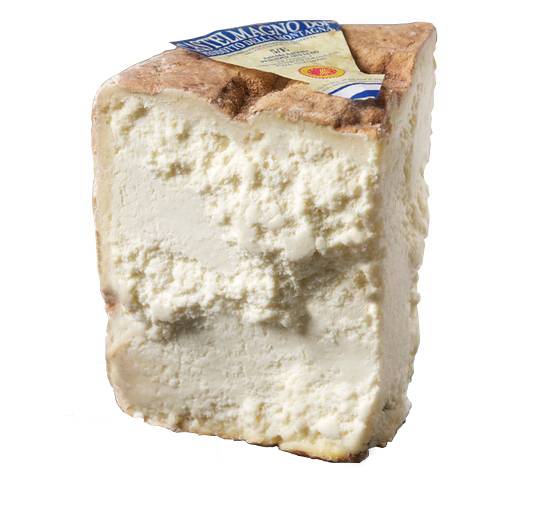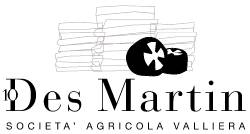

This important and very good cheese, in recent decades, has returned to being a protagonist among the most important italian cheeses.
It can be labelled in two different way, according to the altitude of the pastures on which the cows feed.
If milk, processing, maturing come between 650 and 1000 metres, Castelmagno PDO is called "Castelmagno - Prodotto della Montagna" (prodotto della montagna = mountain product).
While if milk, processing, maturing is made in dairies located above 1.000
metres and produced from May to October, Castelmagno is called "Castelmagno
- Prodotto di Alpeggio" (prodotto di alpeggio = Alpine pastures product).
The cow feeding is
exclusivey made by herbs and flowers, enhanced by grasses, in particular poa and fescue.
Both cheeses are made with cow's milk during summer season (may-october).
In those cheeses we can find blue-greenish veins due to natural marbling (without inoculated moulds).
Castelmagno PDO has a cylindrical shape, which diameter are between 15-25 cm, an edge height of 12-20 cm and a weight of
between 2 and 7 kg.

The "Castelmagno - Prodotto di Alpeggio", has an ivory colour and soft paste in fresh cheeses but with the maturing it becomes dry, compact and grainy with a straw-yellow colour.
The dairies of Castelmagno "Alpeggio" maturing theese cheeses for 6-7 months or more.
This aged cheese has an intense flavour with light scents of
undergrowth, hay, flowers, mushroom.

The dairy cows have to belong to certain types only: Barà Pustertaler, Bruna, Pezzata Rossa dĺOropa, Pezzata Rossa, Grigio Alpina, Piemontese, Montbeliard, Valdostana and their crosses.
At that point, the curd is broken again, minced, mixed and salted.

In 1996, it was awarded the European P.D.O. denomination (Protected Designation of Origin).
